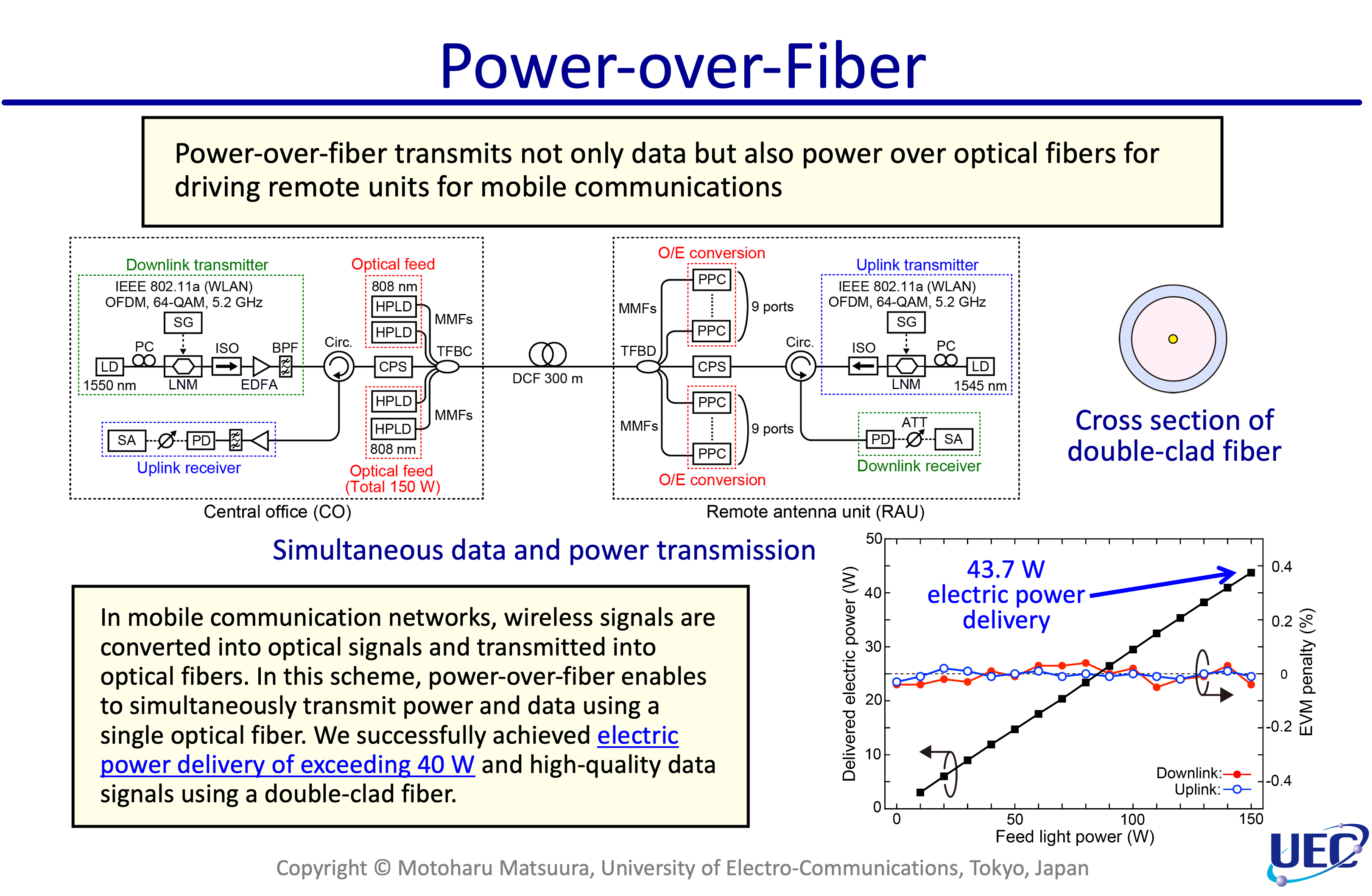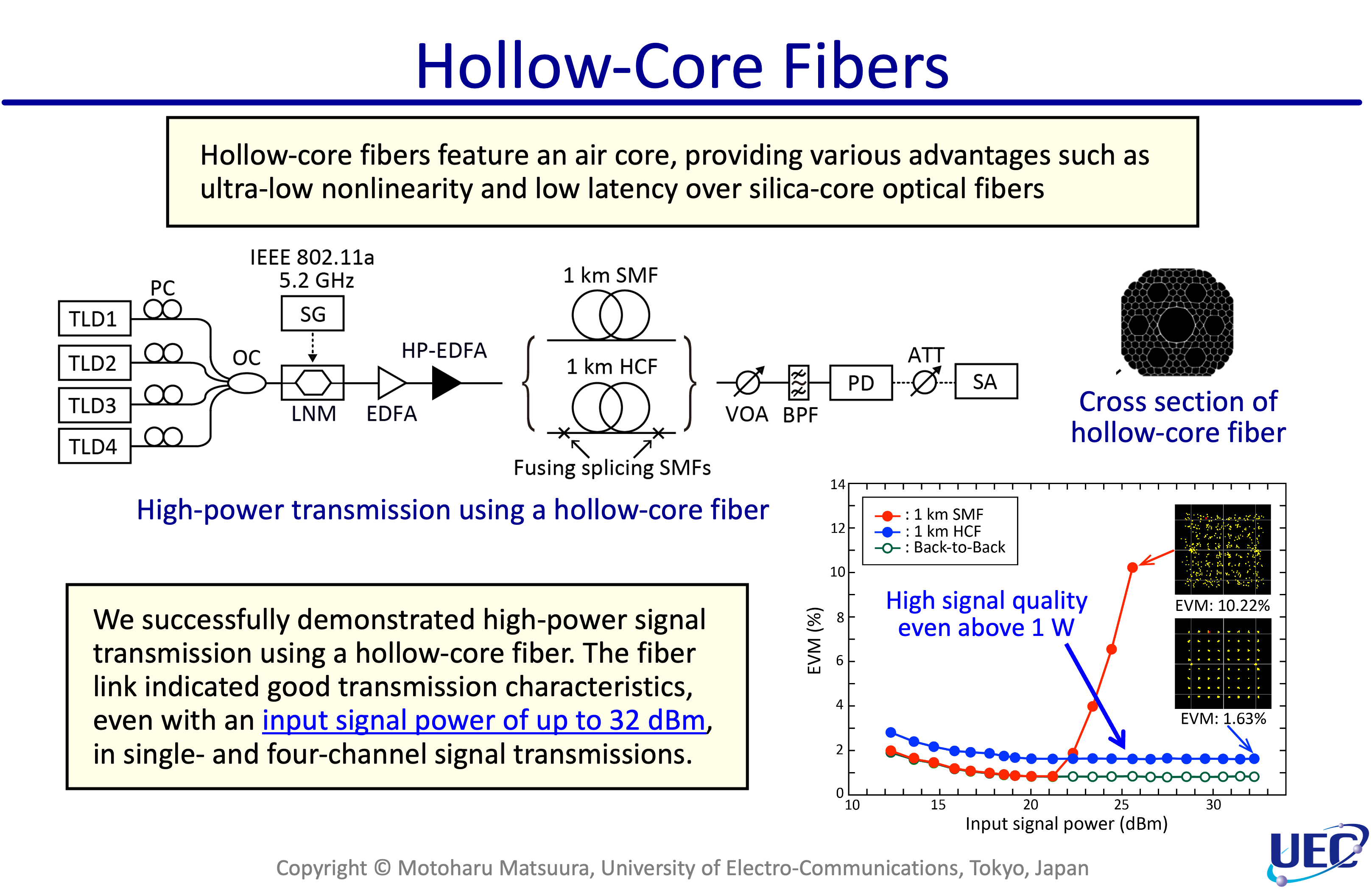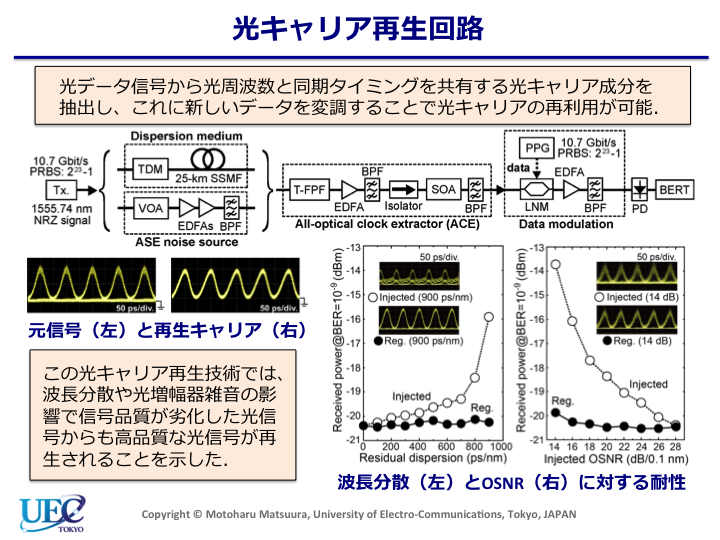Power-over-fiber
Optical fibers are widely used for communication, but they can also supply power when feed light is transmitted as energy along with data signals. This makes it possible to drive as well as communicate with remote units using a single optical fiber.
In our laboratory, we are conducting research and development of power-over-fiber technology that enables simulatensou data and power tranmission signals using a single optical fiber for mobile communications. Using a double-clad fiber with a unique double core structure, we have succeeded in simultaneous transmission of electric power in excess of 40 W and mobile communication signals.

Hollow-core fibers
Conventional optical fibers have been composed of glass, which causes problems such as nonlinear phenomena, input optical power limitation, and propagation delays. Recently, hollow-core fibers, in which the core is made of air, have been attracting attention.
In our laboratory, we are conducting research and development of transmission and application technologies using hollow-core fibers. Taking advantage of the ultra-low nonlinearity of the fiber, we have succeeded in high-quality transmission experiments of optical signals exceeding 1 W, which was impossible with conventional optical fibers.

Optically powered drones
Drones are currently used in a variety of applications, and their introduction into airborne base stations is being considered as an alternative to ground base stations during disasters and events. However, the flight time of drones is limited by battery capacity.
In our laboratory, we are conducting research and development of an optically powered drone driven by optical fibers as a new means to overcome this limitation. In addition to optically power supply, the drone can be controlled via optical fiber communication, making it possible to realize an airborne base station connected only by non-conductive lines. We have succeeded in flight experiments and drone control of a small size drone driven by optical fiber.



